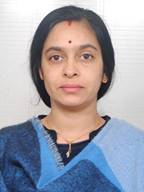
MAJOR PROGRAMME
- Application of cryogenics, enzymes and nano technology in food grains and oil seeds processing for value added processing
- Application of emerging technologies for improving the efficiency of oil extraction from oilseeds
- Development of high value (rich in nutrients and phytofactors ) extruded products using super critical food extrusion technology/ low temperature extrusion techniques
- Novel products development from food grains using fermentation technology
- Design, development and refine the equipment using newer concepts for processing of food grains and oilseeds
Ongoing Institute
Title: Studies on processing of guar (Cyamopsis tetragonoloba) for production of guar gum.
Team: Er. R.K. Vishwakarma (PI), Dr. S.K. Nanda (Co-PI) and Dr. U.S. Shivhare (Co-PI)
Objectives:
1) To study and identify suitable mechanism for dehusking of guar seeds 2) Design, development/ adoption of machine for enhanced recovery of guar splits from guar seed 3) To device a process for producing food grade guar gum powder from guar splits
Progress:
1) The existing guar industries in India were surveyed to collect the information on industrial processing of guar. 2) Physical, thermal and mechanical properties of guar were determined. 3) EMC of guar seed and Guar Gum Splits was determined at four temperatures 10, 20, 30 and 40 C and five relative humidity conditions. 4) Moisture absorption behaviour of Guar seed was studied at five temperatures 20, 30, 40, 50 and 60 C. Seed moisture increased rapidly up to 120 minutes and then decreased gradually. After 210 minutes, the moisture absorption rate was decreased. The final moisture content after soaking the seed for 24 hours was 67.36% (w.b.). 5) The dehulling process for guar was developed and optimized
Publication:
1) Vishwakarma RK, Nanda SK, Shivhare US & Patil RT 2009. Status on post harvest technology of guar (Cyamopsis tetragonoloba) in India. Agricultural Mechanisation in Asia, Africa and Latin America, 40 (1), 65-72. 2) Vishwakarma RK, Shivhare US & Nanda SK 2010. Moisture adsorption isotherms of guar (Cyamposis tetragonoloba) grain and guar gum splits. LWT-Food Science and Technology. doi:10.1016/j.lwt.2010.09.002. Process for Dehulling Guar Seed for Refined Guar Gum Split Production. (Patent Application No.1283/DEL/2007).
Title: Production of Potato flour and starch and it’s use for product diversification and value addition.
Team: Dr. S. K. Tyagi (PI), Dr. Mridula Devi (Co-PI), Dr. Davinder Dhingra (Co-PI) and Dr. Rajbir Singh (Co-PI)
Objectives:
1) To standardize the novel process of making potato flour and starch 2) To establish a pilot plant for making potato flour with control starch combination 3) To prepare potato flour incorporated namkeen bhujia, gulab jamun, paratha and their quality evaluation
Progress:
1) Process of making potato flour and starch was standardized. 2) Pilot plant for making potato flour is under fabrication. 3) A unit of potato washer has been completed.
Title:Evaluation of screw press mechanism for oil expelling as effect of process parameters for high value crops
Team:D Jain and S. Balasubramanian
Objectives:
1) Study the engineering and thermal properties in relations to the higher oil extraction of apricot
2) Study the theoretical and experimental aspect of heat transfer between the processing equipments, oil and oil cake streams during the processing of apricot seeds in an expeller
3) A theoretical study on prediction of extrusion pressure (and compression ratio) and oil flow rate in a screw press for known specifications and the experimental validations.
Progress:
Set up the gadget for measuring thermal conductivity of oil seeds. Trials were made to find out the oil yield point using texture analyzer. The oil seed exerts more load the available load cell (50 kg). Oil yield point was measured for mustard and sunflower seeds using 500 kg load cell and found in the range of 180-300 kg and 270-380 kg, respectively. Further experimental set up and probe velocity study requiring for mathematical modeling are under trail.
Title: Development of technology for health foods from legumes and millets using food extrusion systems
Team: Dr. S. Balasubramanian, Dr. K.K. Singh
Objectives:
1) To evaluate the effects of decortication level and particle size of raw materials on extrudate characteristics.
2) To optimize extrusion process conditions for the production of nutritionally enriched extrudates.
3) To optimize post extrusion process to prepare health foods.
Progress:
Different Ready-to-Eat snack foods were developed from combinations of selected cereals (rice, wheat, maize, sorghum, ragi) with different dehulled legumes (black gram, green gram, lentil and peas) using low cost collet type food extruder. Different extrudates were prepared keeping constant feed rate (25 kg/h) and feed moisture (14% wb) at different legumes incorporation levels (0,5,10 and 15%). Rheological properties of extrudates flour and raw composite flour were evaluated with RVA indicates the low viscosity profile for all the extrudates as compared to their raw composite flour. The results revealed that cereals blended with legumes because of their low viscosity can be used for enriched foods specifically for infants as rice based foods. Degree of gelatinization of rice, wheat, maize, sorghum and ragi were estimated in the range of 36-22%. The extrudates made of cereals alone showed higher value of gelatinization than other incorporation levels and type of legumes. It is revealed that the degree of gelatinization, WAI and WSI were affected by legume incorporation level. Nutritional analysis viz., protein, crude fibre, ash and reducing sugars, non-reducing sugars were performed for all these extrudate. All extrudates were scored between 6 and 8 on 9 point hedonic scale for their organoleptic quality, indicating that the extrudates were acceptable as ready to eat breakfast cereals and snack foods. Optimization of health food with addition of low calorie sugars and SMP with extrudates flour. Engineering drawing and profile and economic feasibility were prepared.
Title: Development of dairy analogues from peanut kernel and utilization of de-oiled cake for food purposes
Team: Dr. D N Yadav and Dr S N Bhowmik
Objectives:
1) To screen commercially available groundnut varieties for the production of dairy analogues. 2) To develop a commercial process for the production of ground nut milk with reduced nutty flavour and a process protocol for the production of dairy analogues. 3) To develop a suitable process for edible ground nut deoiled cake production and its utilization for food purposes.
Progress:
1) Different peanut varieties were screened and variety TG-37 was found best for peanut milk whereas variety GG-20 was found suitable for peanut paneer. 2) A process, based on pressure blanching of peanuts for inactivation of lipoxygenase in peanuts before soaking have been optimized successfully as well as removal of unwanted (nutty odour) from peanut milk was done with steam spurging while deodorizing. Thus prepared peanut milk had negligible nutty odour. Various dairy analogues from peanut milk like peanut beverage, Curd (Dahi), Paneer, Lassi, Shrikhand have been developed successfully. Technology for the same has been transferred to upcoming entrepreneurs from different parts of the country. 3) Development of low fat paneer from partially de-oiled peanut cake.
Publication:
Presentation:D. N. Yadav, K. K. Singh, Hradesh Rajput, S.N.Bhowmik, R.T.Patil, 2010 Development of peanut milk based fermented curd. Proceedings of the 44th Annual Convention and Symposium of Indian Society of Agricultural Engineers, Jan 28-30, New Delhi, India
Title: Development of process and technology for dry degerming of maize at small scale
Team: Dr. P. Barnwal and Dr. Dattatreya M. Kadam
Objectives:
1) To design and develop a maize degermer for separation of germ from maize to obtain degermed maize flour. 2) Performance evaluation of the developed maize degermer. 3) To study the storability of degermed maize flour and utilization of maize germ.
Progress:
1) A small capacity maize degermer has been designed and fabricated in Institute workshop at CIPHET, Ludhiana. 2) Experiments were carried out for degermination of maize on maize degermer for four moisture levels (16.3 %, 17.7 %, 19.5% and 22.2 % w.b.) and three speeds (822 rpm, 1370 rpm, 2283 rpm). 3) It was found that higher recovery of maize germ and maize grit were obtained at the moisture content of 19.5 % w.b. and 1370 rpm with capacity (feed rate) of 35 kg/h. 4) Shelf life study of degermed maize flour is under progress (Storage interval: 10 days; Storage period: 6 months and packaging material: LDPE, HDPE and Al foil).
Title: Design, development and evaluation of composite dhal mill
Team:Dr. D.M. Kadam (P.I. w.e.f April 2009), Er. R.K. Vishwakarma (PI up to April 2009) and Dr R K Goyal (PI up to February 2009), Dr.(Mrs) Mridula Devi (Co-PI up to February 2009)
Objectives:
1) To design and develop a dhal mill to get optimum residence time inside the dehulling machinefinal product. 2) To develop a composite pigeon pea mini dhal mill. 3) Performance evaluation of the mill and studies on quality of the final product.
Progress:
Developed integrated carborundum mini dhal mill for pigeon pea. The machine consists of feed hopper, emery cylindrical and concave of perforated mild steel. This machine has two specific features (emery made of three different grades of carborundum and stoppers inside the concave to increase the residence time inside the machine). The Mini Dhal Mill has the dimension: Length 1000 mm, width 555 mm, Height 1225 mm, abrasive circle surface perimeter is 1100 mm. It is driven by 3 hp motor which rotates roller at 615 rpm. The power is transmitted from motor to roller through v-belt drive pulley. The emery roller is a mild steel cylinder having 30 cm diameter and 75 cm length on which emery is pasted. At the feed section Grade A carborundum followed by Grade B and at outlet section Grade C is pasted. First 25 cm of the roller is pasted with 18-grade emery, middle 25 cm with 24-grade emery and last 25 cm with 32 grade emery. The material is fed at the start of the roller where 18-grade emery is pasted. The capacity of the mini dhal mill with above roller was 100 kg/h. The preliminary tests on this small capacity mill developed at CIPHET indicate in single pass it can produce commercial grade dal upto 73% where as in single roller small capacity meal single pass produces less than 50% dal.
Publication:
Goyal, R.K., Vishwakarma, R.K. and Wanjari, O.D. 2010. Effect of moisture content on pitting and milling efficiency of pigeon pea grain. Food and Bioprocess Technology. (2010) 3:146–149 DOI 10.1007/s11947-009-0255-2 Dattatreya M. Kadam (2010). Pulse Processing and Value Addition (Lead Paper) presented at Dept of Plant Breeding and Genetics, PAU, Ludhiana in the occasion of Brainstorming session on Pulse Processing during 21-22 February 2010. Goyal, R.K., Vishwakarma, R.K. and Mridula, D. 2008. Some Physico-chemical Properties of Pigeon Pea Dhal of India. Journal of Agricultural Engineering (Submitted in 2008).
Ongoing External Funded
Title: Development of technology for oil expelling of dehulled flaxseed (linseed) kernel and utilization of de-oiled cake(DST Project).
Team: Dr. K.K.Singh* Mridula Devi# and P. Barnwal *P.I. up to February 18, 2010; #P.I. since February 19, 2010
Objectives:
1) To develop process for mechanical fractionation of flaxseed to separate lignan rich hull from the kernel. 2) To develop and optimize process for expelling of dehulled flaxseed kernel. 3) To develop process technology for utilization of de-oiled cake as health food for human consumption and non-ruminant (poultry and fish) feed
Progress:
1) Physical properties of flaxseed varieties (11 No.) was done. 2) Some physical and mechanical properties of Neelam and Garima varieties of flaxseed were studied as a function of moisture content (3.24% to 17.21% d.b). 3) Dehulling of flaxseed- The dehulling was favourable at lower moisture content (1.9% wb and 4.5% wb) for 40s residence time and 2000 rpm of abrasive disc (rotor) of the polisher. The highest embryo recovery of 44% has been obtained at 2% moisture content and 40 s residence time.
Publication:
1) Jagbir Rehal and K.K. Singh. Effect of moisture content on some physical properties of flaxseed var. Neelam. XLIVth ISAE Convention & Symposium, New Delhi. January 28-30, 2010 2) Rehal,J. and Singh, K. K. Alsi:Khadya,Aahar Aur reshe ka sambhavit shrot. National Hindi Seminar on ‘Role of Agricultural Processing Industry in Rural Development’, CIPHET, Ludhiana, 13-14 November, 2009.
Title: Design and development of foam mat dryer for selected liquid foods (Tomato, Mango, Kinnow and Pineapple)
Team: Dr. D.M. Kadam (PI), Dr. S. Balasubramanian (Co-PI), Dr. D.R. Rai (Co � PI) ) and Ms. Monika Sharma (Co-PI)
Objectives:
1) To study the physico-chemical and engineering properties of different liquid juices (Tomato, Kinnow, Pineapple and Mango). 2) To study the suitability of different foaming agents for foam development and stabilization. 3) Design and development of continuous type pilot scale foam mat dryer. 4) Optimisation of foam-mat drying process for Tomato, Kinnow, Pineapple and Mango juices producing reconstitutable powders. 5) Characterization and evaluation of quality attributes of foam mat dried powders. 6) Scale up of foam mat dryer for industrial use.
Progress:
1) Foam mat drying of tomato, mango and kinnow juice experiments were operated under different drying air temperature (65, 75 and 85„aC). 2) Biochemical analysis such as TSS, Titrable acidity, ascorbic acid, sugar, microbial load, colour values etc. of foam mat dried Kinnow, mango and tomato powder was done.
Publication:
1) Dattatreya M. Kadam, Robin A. Wilson, and Sumandeep Kaur (2010). Determination of biochemical properties of foam mat dried mango powder. International Journal of Food Science and Technology. 45; 1626-1632 doi: 10.1111/j.1365-2621.2010.02308.x 2) Dattatreya M. Kadam, S Balasubramanian (Accepted). Foam mat drying of tomato juice. Journal of Food Process Engineering. 3) Dattatreya M. Kadam, Robin A. Wilson, Sumandeep Kaur and Manisha (Accepted). Influence of Foam Mat Drying on Quality of Tomato Powder. International Journal of Food Properties E- book Chapter Dattatreya M. Kadam, R. T. Patil and Pratibha Kaushik (2010). Foam Mat Drying of Fruit and Vegetable Products (Chapter 5). E book entitled “Drying of Food, Vegetables and Fruits” Volume ‘A’: Fundamental Topics. Edited by Dr. Sachin Jangam (National University of Singapore), Dr. Chung Lim Law (University of Nottingham, Malaysia) and Professor Arun Mujumdar (National University of Singapore). http://serve.me.nus.edu.sg/ arun/file/ Publications /books/ Drying%20of%20Foods %20 Vegetables%20and%20Fruits%20Volume%201.pdf Dattatreya M. Kadam (2009). Mathematical Modeling of Thin Layer Foam Mat Drying of Tomato Juice paper presented at 12th Punjab Science Congress for Punjab Young Scientist Award held at PAU, Ludhiana during February 7-9, 2009.
Completed Institute
Title: Development of Millet Mill to Produce Refined Flour
Team: Er. R.K. Vishwakarma (PI), Dr. S.K. Nanda (Co-PI)
Objectives:
1) To develop process for dehulling minor millets 2) To develop/adopt a pearler to remove bran and germ from the dehulled millets 3) To design and develop a pilot scale millet milling machine to produce refined millet flour
Progress:
The physical properties of two minor millets were determined for development of process for dehulling and pearling. A pilot scale millet mill of 100 kg/h throughput capacity (including dehuller and pearler) was developed and installed at CIPHET, Abohar. Evaluation of the pilot plant for dehulling and pearling of minor millets namely proso, barnyard, kodo, little and foxtail millet is also done. The minimum dehulling efficiency of 86% was observed with least losses in the form of broken and powder. The plant is capable of pearling barley, sorghum and bajra also.
Title: Adoptive trials on biochemical treatments of oil seeds using mechanized oil expeller for commercial exploitation
Team: Dr. S. K. Tyagi (PI), Er. R. K. Vishwakarma (Co-PI), Er. S Balasubramanian (Co-PI)
Objectives:
1) To evaluate the process of biochemical treatment w.r.t. rapeseed/ mustard using Pantnagar technology for technical feasibility and financial viability 2) To establish pilot plant for extraction of oil from rapeseed/ mustard 3) To conduct long run trials on the pilot plant towards establishing commercial viability
Progress:
1) Development of pregrinder 2) Development of a blender mixer (automatic) to treat the mustard seed with an enzyme under controlled temperature condition 3) Designing and fabrication of an automatic shaker with controlled temperature and shaking speed 4) Designing and fabrication of a ball mill for size reduction and for increasing the surface area of the absorbent
Title: By product utilization and value addition of Mustard seed
Team: Dr. S. K. Tyagi (PI), Dr. Mridula Devi (Co-PI), Dr. V. R. Bhagwat (PI)
Objectives:
1) To develop and evaluate low cost mustard sauce for nutritional quality, shelf life and acceptability 2) To examine the use of de-oiled unhusked mustard powder for flavoring purposes 3) To develop and evaluate herbal pesticide and insecticide from by-products of mustard seed in conjunction with botanicals against major storage pests 4) To examine the efficacy of by product against Hellicoverpa armigera in chick pea under field condition and storage pests
Progress:
Technologies transferred: 1) Pre-grinding of oilseed prior to mechanical oil expelling – A new process of energy saving. 2) Design of Groundnut pod decorticator. 3) A low energy process of dehulling of mustard seeds. 4) A new process for preparing the mustard sauce. 5) Pre-grinder for size reduction. 6) Consultancy of design and fabrication of mustard processing plant. 7) Mustard extract for Herbicide and pesticide. Prototype developed: 1) Gravitational Husk Separator 2) Design of double jacketed reactor
Award: “Team Leader award for interdisciplinary team research in agriculture and allied sciences”.
Publication:
1) Tyagi SK, Manikantan MR, Oberoi HS, Kaur G 2006. Effect of mustard flour incorporation on nutritional, sensory and textural characteristics of biscuits, Journal of Food Engineering 80:1043-1050. 2) Tyagi SK, Oberoi HS, Manikantan MR, Garg A, Kaur G 2006. Study of physico-chemical characteristics of cake constituents and organoleptic quality of baked cake enriched with mustard meal, Processed Food Industry June: 23-25. 3) Mridula D, Tyagi SK, Wanjari OD 2006. Effect of defatted mustard flour on quality of noodles, Indian Journal of Nutrition and Dietetics 43: 305-311. 4) Tyagi SK, Oberoi HS, Bhagwat VR 2006. Testing of mustard by-product against Callosobruchus chinensis (Linn.) under laboratory conditions, New Agriculturist 18: 29-31. Patents obtained: 1) Development of a process for conversion of paddy husk ash into bleaching material for edible oil (Patent No. 216982). 2) Pre-grinding of oilseed prior to mechanical oil expelling – A new process of energy saving (Patent No. 217106).
Title: Evaluation of smokes from eco-friendly byproducts against Callosobruchus chinensis (Linn.) infesting chickpea grains
Team: Dr. V. R. Bhagwat (PI), Dr. S. K. Tyagi (Co-PI), Dr. R.K. Gupta (Co-PI), Er. Aleksha Kudos (Co-PI)
Objectives:
1) To evaluate efficacy of byproduct material against Callosobruchus spp. 2) To devise method for efficient fumigation 3) To design and develop fumigation chamber
Progress:
1) Fabrication and development of efficient furnace cum fumigation chamber for studies 2) Maintenance and development of disease free Callosobruchus culture 3) Testing of different fumes of byproducts on the development of Callosobruchus with and without grains
Title: Development of a technology for home production of cereal-soy tempeh
Team: Dr. S.N. Bhowmik (PI), Dr. D.N.Yadav (Co-PI), Dr. S. Balasubamanian (Co-PI)
Objectives:
To develop a simple process for home production of cereal-soy tempeh
Progress:
1) A carrier based starter culture of Rhizopus oryzae ITCC 7382-09 for cereal-soy tempeh fermentation is ready 2) A protocol for developing a cereal-soy tempeh 3) A suitable vessel for household cereal-soy tempeh production is fabricated
Title: Shelf life studies of fortified sattu
Team: Dr Mridula D., and Dr Rita Jain, PAU, Ludhiana
Objectives:
Progress:
1) Fortified Bengal gram based sattu 2) Fortified barley and bengal gram based sattu 3) Low Cost Flour Mixer
Publication:
Research Papers Mridula D., Rita Jain and K.K. Singh. ‘Effect of storage on quality of fortified bengal gram sattu’. J Food Sci Technol (January–February 2010) 47(1):119–123.
Mridula D., Rita Jain and K.K. Singh. Quality, Acceptability and Shelf Life of Micronutrient Fortified Indian Traditional Sattu. Journal of Agricultural Engineering, Vol. 46(2): April-June 2009.
Conference presentations Mridula D., Rita Jain, K.K. Singh and O.D. Wanjari. Effect of storage on physico-chemical quality and acceptability of bengal gram sattu. Paper presented in 39th National Conference of Nutrition Society of India, at National Institute of Nutrition, Hyderabad, 15-16 November 2007 (Abstract No. PSFS-06).
Title: Development of formulated foods through extrusion technique.
Team: Dr. K.K. Singh (PI), Dr. Mridula Devi (Co-PI) and Dr. S. Balasubramanian (Co-PI)
Objectives:
1) To develop product formulation for extruded (expanded) foods based on nutritional requirements of different age groups 2) To optimize primary processing and pre-treatments of raw material required for extrusion 3) To optimize process and establish protocol for nutritionally balanced formulated foods using extrusion 4) To evaluate consumer acceptability of the developed formulated foods
Progress:
1) Different least cost combination food formulations were prepared according to RDA. 2) Pearl millet (81.68%), finger millet (7.02%) and dehulled soybean (11.29%) was found suitable for extrudates making at 120OC barrel temperature, screw speed 250 rpm and feed rate 9.5 kg/h.
Publication:
Balasubramanian S, Singh KK and Patil RT. Formulation of millet-soy extrudates through linear programming. Proceedings of 44th Annual Convention and Symposium of Indian Society of Agricultural Engineers, New Delhi, 28-30 January 2010.
Title: Development and standardization of pre-milling treatment for enhancement of dhal recovery
Team: R.K.Goyal
Objectives:
Progress:
Review of literature was done from different sources on different aspects of pre-milling treatments of pigeon pea. (Merged with another project entitled “Energy efficient pulse milling technology”) Note: This Project merged with the project entitled ” Energy efficient milling technology”.
Title: Production of quality rice at farm level
Team: R.K.Goyal, O.D.Wanjari, P.Barnwal and D.K.Bharti
Objectives:
Progress:
High moisture Basmati paddy was dried using dry rice husk (hygroscopic material) with a purpose to get less or no fissures. (Merged with another project entitled “Design and development of integrated paddy dryer”). Note: This project merged with the project entitled ” Design and development of integrated paddy dryer”.
Title: Performance evaluation of existing pulse milling machineries.
Team: R.K.Goyal, O.D.Wanjari, M.R.Manikantan and P.Barnwal
Objectives:
Progress:
Information on various available pulse milling machines, dhal milling industry and new technologies for dehusking of pulses were collected and CFTRI dhal mill was evaluated on chick pea using most common industrial pre-treatments.
Title: Design and development of integrated paddy dryer.
Team: O.D. Wanjari, R.K.Goyal, M.R.Manikantan, P.Barnwal
Objectives:
Progress:
The experimental set up was completed e.g. design, fabrication and installation of a re-circulatory drying bin of 1000 kg holding capacity for paddy; a biomass husk fired furnace and integration of different sources of heat for air to be heated i.e. biomass husk fired furnace, solar air heater and electric heater was done with the drying bin through ducts. Paddy (variety: PR-118), procured from PAU farm, was dried using different integrated sources of heat.
Title: Establishment of agro-processing center for commercial feasibility and dissemination
Team: P.Barnwal D.Dhingra, D.R.Rai, D.K.Bharti and A. Kumar
Objectives:
Progress:
An agro-processing center has been established for processing of cereals, pulses and spices at CIPHET, Ludhiana, four agro-processing center models were selected and analyzed and the established facility was used to demonstrate the technology/ equipment and processes to visitors including farmers, trainees, rural entrepreneurs, foreigners, agricultural students etc.
Title: Design and Development of Foam Mat Dryer for Selected Liquid Foods*.
Team: Dr. Dattatreya M. Kadam, Dr. Balasubramanian and Dr. K. Narsaiah
Objectives:
1) To study the physico-chemical and engineering properties of different liquid juices (Tomato, Kinnow, Pineapple and Mango).
2) To study the suitability of different foaming agents for foam development and stabilization.
3) Design and development of continuous type pilot scale foam mat dryer.
4) Optimisation of foam-mat drying process for Tomato, Kinnow, Pineapple and Mango juices producing reconstitutable powders.
5) Characterization and evaluation of quality attributes of foam mat dried powders.
6) Scale up of foam mat dryer for industrial use.
Progress:
Foam mat drying of tomato, mango and kinnow juice experiments were operated under different drying air temperature (65, 75 and 85„aC). Biochemical analysis such as TSS, Titrable acidity, ascorbic acid, sugar, microbial load, colour values etc. of foam mat dried Kinnow, mango and tomato powder was done.
Publication:
Dattatreya M. Kadam and S Balasubramanian (Submitted) Foam mat drying of tomato juice
Title: Development of Integrated Dryer for Some Medicinal and Aromatic Plant Leaves
Team: Dr. R. K. Goyal , Dr. Dattatreya M. Kadam and Dr. O.D.Wanjari
Objectives:
1) To design and fabricate drying chamber assembly on the existing integrated dryer line. 2) To evaluate the performance of the different energy sources of the integrated dryer and optimize the drying parameters for the medicinal and aromatic plant leaves such as Mehndi, Mint, Tulsi. 3) To evaluate the quality of the final dried product 4) To transfer the developed technology to the end-users.
Progress:
1) Fabricated flat plate solar heat collector and heated air is circulated in drying chamber. 2) Application of solar energy in drying medicinal crops such as Basil (Tulsi), Mint (Pudina) and Henna (Mehndi) will help to prepare medicinal product in hygienic condition. 3) A low cost solar drying technique for medicinal crops drying is ready for commercialization.
Publication:
1) R K Goyal, Dattatreya M. Kadam (submitted). Mathematical modeling of convective drying thin layer drying of basil leaves. International Journal of Food Engineering. 2) Dattatreya M. Kadam*; R K Goyal and K. K. Singh (submitted). Thin Layer Convective Drying of Mint Leaves, The Journal of Medicinal Plants Research
Completed External Funded
Title: Multiplication, Field Demonstration and Distribution of “CIPHET Banana-Comb / Hand Cutter”
Team: Dr. D M Kadam and Dr. D Dhingra
Objectives:
1) Mass production and multiplication of CIPHET developed “CIPHET Banana-comb/hand cutter”.
2) Field demonstration, distribution, promotion and sale of the tool to the beneficiaries with help of NHB.
3) Performance evaluation of banana-comb/hand cutter and collection of feed back from banana growers/ traders etc.
Progress:
1) National Horticulture Board (NHB), Gurgoan has sanctioned Rs. 7.25 Lakh for Mass production (4000Nos), field demonstration and distribution of Manual Banana-Comb/Hand Cutter. 2) Got fabricated 4000 nos. of CIPHET banana-comb/hand cutter tool from National Agro Industries, Ludhiana 3) Tool is already in the farmer’s field and big companies like Field Fresh of Bharti Del Monte, Reliance retail Ltd and Jain Foods have purchased tool for testing as their retail initiatives. 4) This tool will definitely reduce 2 to 6% post harvest losses of banana during cutting operation. 5) Sale and distribution of banana-comb/hand cutter is going on. 6) Cost of “CIPHET Banana-Comb/hand Cutter” is Rs.150 per piece excluding packaging and forwarding charges.
Publication:
CIPHET banana-comb cutter demonstrated to farmers and traders. CIPHET E – Newsletter for July 2007, Vol. 2 No. 7: page no. 6-8. Dattatreya M. Kadam (2008). “Hasta chaleet Kela guccha katayee yantra”, Krishi Prasanskaran Darpan (Rajbhasha Patrika Hindi), July- December 2008 Vol. 5 page: 9-10. Dattatreya M. Kadam, R T Patil and D Dhingra (2007). Design, Development and Evaluation of manually operated Banana-Hand Cutter” (poster presented). National Conference on “Food and Nutrition Security: Food and Biotechnological interventions” Dept. of Food Technology, SLIET, Longowal on 22nd and 23rd March 2007. Dattatreya M. Kadam, D. Dhingra and R. T. Patil (2007). Development, Evaluation and Demonstration of Manual Banana-comb/Hand Cutter” (poster presented) during National Conference on Banana held at NRC Banana, Trichy during 25 to 29 October, 2007. Dattatreya M. Kadam and R T Patil (2009). Mechanisation in Banana with Special Reference to Bunch Management” (paper presented) during 2nd National Conference on “Production of Healthy Planting Materials in Banana” from 3rd to 6th October 2009 held at Jain Hills, Jalgoan.
Technology:
1) CIPHET Banana-comb/hand cutter, patented and commercialized technology which is already being used by many banana-growers, traders and industries. 2) CIPHET Banana-comb cutter technology of CIPHET, Ludhiana is transferred to National Agro Industries, Ludhiana at the license fees of Rs 45,000 (Non-exclusive). 3) Technology released to the market and license agreement handed over to the National Agro Industries, Ludhiana on 18th May 2009.

Dr. Manju Bala
Designation: Acting Head, FG&OP & Principal Scientist
Qualification: Ph.D Biochemistry
Contact No.: +91-161-2313136
Email ID: avimithi[at]gmail[dot]com
Research Interests: Quality Analysis of Grains Oil Seeds & their products. Extraction of Bioactive compounds.
Major Research Accomplishments:
R & D:
Awards:
Training:
Patents, Technology, Methodology, Genetic Stock, Variety, etc.:
Publications:

Dr. Rajesh Kumar Vishwakarma
Designation: Principal Scientist
Qualification: Ph.D, ( Agril. Chemical Engg.)
Contact No.: Email ID: rkvciphet[at]gmail[dot]com
Research Interests: Processing of Guar, Oilseeds, Cerals & Litchi and valuation of Post Harvest Losses
Major Research Accomplishments:
R & D:
Awards:
Training:
Patents, Technology, Methodology, Genetic Stock, Variety, etc.:
Publications:

Dr. S.K. Tyagi
Designation: Pr. Scientist
Qualification: Ph.D
Contact No.:
Email ID: phet[dot]ciphet[at]icar[dot]gov[dot]in,
pcpht2012[at]yahoo[dot]com
Research Interests: Dr. Sanjeev Kumar Tyagi (born on 2nd August 1970) did his schooling from Saint Joseph School, Meerut and Govt. Inter College, Roorkee. B.Tech (Chemical Technology) from H.B.T.I, Kanpur, M.E (Chemical Engineering) from I.I.T, Roorkee and Ph.D course work in Chemical Engineering from I.I.T, Delhi and then obtained his Ph.D on “Removal of phenolic compound by activated carbon and Regeneration of activated carbon” and D.Sc (Agricultural Chemistry) on the tropic “Development of an adsorbent for Removing colour

Dr. Deepika Goswami
Designation: Sr. Scientist
Qualification: M.Sc. (FST)
Contact No.: +91-1612313171
Email ID: deepikagoswami[at]rediffmail[dot]com
Research Interests: Value addition of coarse cereals & millets by application of different technologies emphasis mainly being on baking.
Major Research Accomplishments:
R & D:
Awards:
Training:
Patents, Technology, Methodology, Genetic Stock, Variety, etc.:
Publications:

Dr. Chandan Solanki
Designation: Scientist (SS) (AS&PE)
Qualification: Ph.D (Processing & Food Engineering)
Contact No.: +91-161-2313223
Email ID: chandan4uu12[at]gmail[dot]com
Research Interests:
Major Research Accomplishments:
R & D:
Awards:
Training:
Patents, Technology, Methodology, Genetic Stock, Variety, etc.:
Publications:

Dr. (Smt.) Swati Sethi
Designation: Scientist Qualification: Ph.D (Food Technology)
Contact No.: +91-161-2313144
Email ID: swati[dot]fst[at]gmail[dot]com
Research Interests:
Major Research Accomplishments:
R & D:
Awards:
Training:
Patents, Technology, Methodology, Genetic Stock, Variety, etc.:
Publications:

Dr. Pankaj Kumar
Designation: Scientist
Qualification: Ph.D
Contact No.:
Email ID: pankaj10364[at]gmail[dot]com
Research Interests: Cryogenic Grinding of spices, Extrusion processing of coarse cereals
Major Research Accomplishments:
R & D:
Awards:
Training:
Patents, Technology, Methodology, Genetic Stock, Variety, etc.:
Publications:

Dr. Guru P.N.
Designation: Scientist (Agril. Entomology)
Qualification: M.Sc. (Agri), Ph.D
Contact No.:
Email ID: gurupn5016[at]gmail[dot]com
Research Interests: Storage Entomology
Major Research Accomplishments:
R & D:
Awards:
Training:
Patents, Technology, Methodology, Genetic Stock, Variety, etc.:
Publications:

Er. Urhe Sumit Bhausaheb
Designation: Scientist
Qualification: M.Tech.
Contact No.:
Email ID: sumit[dot]urhe[at]icar[dot]gov[dot]in
Research Interests:
Drying and Dehydration, Extrusion Processing
Major Research Accomplishments:
R & D:
Awards:
Training:
Patents, Technology, Methodology, Genetic Stock, Variety, etc.:
Publications:

Sh. Satwinder Singh
Designation: Technical Assistant
Qualification: 10+1
Contact No.: +91-161-2313113
Email ID:
Research Interests: Administration Work
Major Research Accomplishments:
R & D:
Awards:
Training:
Patents, Technology, Methodology, Genetic Stock, Variety, etc.:
Publications:

Sh. Sarup Singh
Designation: Sr. Technician
Qualification:
Contact No.: +91-161-2313113
Email ID:
Research Interests:
Major Research Accomplishments:
R & D:
Awards:
Training:
Patents, Technology, Methodology, Genetic Stock, Variety, etc.:
Publications:

Sh. Manoj Kumar
Designation: Technician
Qualification: Metric
Contact No.: +91-161-2313113
Email ID:
Research Interests:
Major Research Accomplishments:
R & D:
Awards:
Training:
Patents, Technology, Methodology, Genetic Stock, Variety, etc.:
Publications:
List of CIPHET Publications / Technical bulletins project profiles/pumphlets. – (Language – English)
About Lab
Food Grains and Oilseeds Processing Division undertake basic, applied and adoptive engineering and technological research in post production sector of cereals, pulses and oilseeds as well as designing and development of different processing equipments. The division also works on establishment of different pilot plants for processing of major cereals, pulses and oilseed crops to study and optimize different unit operations w.r.t higher recovery with low energy consumption. Division is also involved in the development of technologies for value addition of cereals, pulses and oilseeds products and by products. Modernization of post harvest management of cereals, pulses and oilseeds is the major concern of the division. Division is also carrying out the research to produce edible grade de-oiled cake from different oilseeds crops and its utilization in the development of value added protein rich products.
Laboratory Facilities
- Cleaning, Grading and Drying Laboratory – (Language – English)
- Product development & by-product utilization laboratory – (Language – English)
- Food quality and safety laboratory – (Language – English)
- Bioengineering properties laboratory – (Language – English)
Instruments
Tissue Culture Microscope
These are microscopes for biological applications utilizing living tissue cells in petri dishes and flasks. Tissue culture specimens are often grown in petri dishes and need to be viewed from the bottom of the dish. This requires the microscope to be inverted, with the microscope objectives pointing upward, thus the name inverted tissue culture microscope. This is opposite of the orientation of the typical compound light microscope with objectives pointing downward to view the microscope slide.
Rancimat
This PC – controlled measuring device has the following applications in food industry: Determining the Oxidative stability of edible fats and oils Development of antioxidants Determining the oxidative stability of fat-containing products like cereals, biscuits, cookies, hazelnuts etc.
Laser Scattering Particle Size Distribution Analyzer
This instrument is a “Measurement Unit” designed to measure particle size distributions ranging from 0.01 µm to 3000 µm, in a given sample without changing ranges. Particle size distribution measurement is used for quality control in basic research and production processing of fine ceramics, drugs and other products
Texture Analyzer
1.Determination of rupture strength of a sample. 2.Determination of losses during storage. 3.Determination of fiber content like in case of ladyfinger tested by breaking the tip.
Gloss Meter
Gloss and sheen measurement of a given surface
Fluid Bed Dryer
1.Simple drying of material to give moisture content and the drying time (residue time) required. 2.Determination of drying curves – to assess feasibility of fluidized bed drying of a material on an industrial scale. 3.Calculation of heat transfer coefficients for different conditions relevant to dryer design and comparison of fluidized beds with other drying methods.
Uv/Vis Spectrometer
Determination of minute quantities of substances like micronutrients in agricultural soil, plants; organic components in biological matter; glucose, fructose etc in foods
Pasta Extruder
This automatic machine has been designed, built and protected for the sole production of extruded dough made from raw materials such as hard and soft grain flour with the addition of water and / or eggs.
Rotating Head Extruder
1.Production of ready – to – eat expanded products. 2.Production of protein enriched extrudates of different sizes and shapes.
Single Screw Extruder
1.Production of Ready – to – Eat expanded products. 2.Production of protein enriched extrudates of different sizes and shapes
Double Screw Extruder
1.Production of Ready – to – Eat expanded products. 2.Production of protein enriched extrudates of different sizes and shapes.
Moisture Analyzer
Determination of moisture content of a given sample
Fibra Plus
Determination of Crude fibre, NDF, ADF, ADL, Cellulose, Hemicelluloses, Lignin & related parameters in plant materials compound feed, food etc.
Kel Plus
Estimation of % Nitrogen content of a food sample that further quantitatively determine the protein content of the sample.
Socs Plus
Automated solvent extraction for rapid, economic and safe estimation of % fat in samples
Lab Staff

Sh. Satvinder Singh
Sr. Technician (Lab. Tech.)
List of equipment/machines – (Language – English)
At present there is no content available for this page, once content will be available would be updated.









